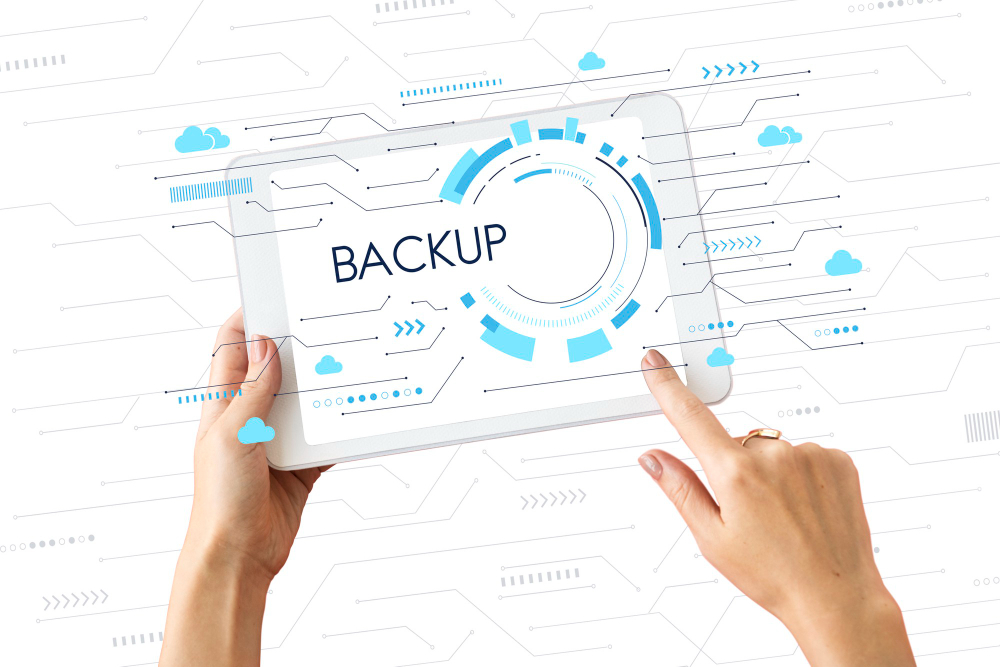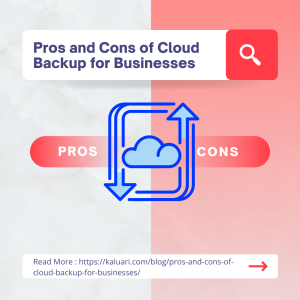Data has become one of our most valuable assets for personal or business needs. For both individuals and businesses, the information stored on our devices and in the cloud allows us to access important memories, run critical systems, and conduct our daily work. Despite our growing reliance on digital data, many of us do not have adequate protection against data loss. This necessitates the need for a comprehensive data recovery plan.
Setting up automated backup systems provides one of the best forms of data insurance. Regularly and automatically copying your data to a secondary location can ensure you have multiple copies readily available in case of hardware failure, accidental deletion, corruption, hacking, or other data loss disasters.
The Basics of Automated Backup
Automated backups provide scheduled, routine data copying from a primary source to a secondary destination without manual intervention. The software handles the process of securely copying specified files and folders to local external drives, business servers, or cloud storage based on a defined backup policy. Full backups copy all data each time they run, while incremental backups only copy new or changed data since the prior backup.
Backup software allows creating schedules to perform backups continuously, daily, weekly, etc. For personal use, popular options include cloud services like iCloud and Dropbox, which provide easy offsite backup. Businesses often implement on-premises backup servers with systematic agents on employee devices to centralize backups across the organization. The right automated backup solution depends on factors like security needs, how often data changes, and required restore capabilities.
Why Does Data Recovery Matter to You
The ability to recover after data loss is no longer a nice to have but an essential requirement in today’s digitally-driven world. Various scenarios can lead to catastrophic data destruction, such as – hardware failures like crashed drives or devices suddenly dying, unintended human errors like accidentally deleting files or reformatting drives, cyberattacks that encrypt or corrupt data, and natural disasters all frequently cause significant data loss events. For example, it’s estimated over 500,000 laptops fail each year in the U.S. alone, resulting in millions of dollars of lost data and productivity. According to IBM’s 2022 Cost of Data Breach report, the average data breach costs surveyed companies close to $4.35 million.
The consequences of losing access to critical data and systems can range from minor inconveniences to complete business shutdown. Data recovery is the only line of defense against such scenarios, and Automated backups provide a solid method for restoring data when the unexpected occurs.
Key Components of a Robust Data Recovery Strategy
The foundation of any data recovery strategy is performing regular backup operations. Backups should be scheduled at a frequency that matches the volume of data changes and the criticality of the systems. For example, mission-critical systems may warrant near-continuous backups, while less dynamic data may only require daily or weekly backup cycles.
Redundancy and Off-Site Backups
Maintaining redundant backup copies in multiple locations safeguards against localized failures. Critical backups should follow the 3-2-1 rule – 3 total copies, 2 different media types, 1 copy off-site. The off-site copy protects against physical disasters like fires or floods.
Data Encryption and Security
Backups often contain sensitive information. Strong encryption of backups is essential both during transmission and at rest. Access controls must also be implemented to prevent unauthorized restoration.
Testing and Verification
Backup systems should be regularly tested by performing actual restores. This verifies backups are working as intended and data can be successfully recovered when needed.
Documentation of Recovery Procedures
Detailed documentation outlining the step-by-step recovery process for various scenarios enables rapid and accurate restores. Testing confirms the documentation matches reality.
Methods of Data Recovery
1. Full System Restore
If an entire system has failed or needs reverting to a previous state, a full system restore from the backup can be performed. This rolls back the system to the state captured in the backup by overwriting the existing corrupted files and configuration. Full restores allow recovery from ransomware or other widespread data loss.
2. File-Level Recovery
When only certain files or folders are lost or corrupted, precise file-level recovery retrieves just the affected data from backups. This is useful for restoring from accidental deletions, drive failures, or isolated data corruption incidents. File recovery is faster and simpler compared to full restores.
3. Point-in-Time Recovery
This powerful capability allows restoring data to any specific point in time covered by the backups. This enables winding data back to a state before malware or human errors occured. It’s also useful for legal/compliance purposes if past versions of data must be retrieved.
Challenges and Considerations for Data Backup
Data Volume – As data size grows, required backup storage, bandwidth, and time windows also increase. Solutions must scale cost-effectively to accommodate growth. Strategies like incremental backups, compression, deduplication, and archiving help manage large datasets.
Recovery Time Objectives (RTOs) – The acceptable downtime for applications and data loss limits dictates the recovery plans. Backups must meet RTOs through methods like continuous replication for mission-critical systems with near-zero RTOs.
Costs – Balance the recovery requirements against budget realities. Consider the total cost of ownership, including storage capacity needs, software licensing, cloud usage fees, maintenance, and overhead.
Testing and Updating – Regular testing by performing restores verifies recoverability and allows validating documentation. Update the plans to reflect changes and address any gaps found during testing.
Best Practices for Data Recovery
Some of the best practices for optimizing your automated backup and data recovery capabilities are:
- Set up monitoring and alerts on backup systems – Configure notifications if backups fail or don’t run so issues can be addressed swiftly. Monitor tools like error logs and reports.
- Maintain off-site backup copies – Storing backups locally and in the cloud (or external off-site location) provides geographic redundancy to recover from natural disasters or site failures.
- Regularly test restores – Run practice restores to confirm backups are working and documentation is accurate. This surfaces any issues to be corrected before a real recovery scenario.
- Isolate backup systems – Keep backup systems and storage isolated from primary networks to prevent malicious activity from impacting backup integrity.
- Encrypt backup data – Encryption both in transit and at rest, is crucial for securing backups against unauthorized access after loss events.
- Update software patches – Keep backup software, operating systems, and firmware updated to avoid vulnerabilities that could compromise backups.
- Document in detail – Thoroughly document architecture, policies, procedures, restoration steps, and key contacts to enable successful recoveries.
How to find the Right Automated Backup Solution
Choosing the right automated backup solution will require careful evaluation of your unique data protection needs and environment. While the marketplace offers a wide array of options for backup, the following criterion will help guide you to the ideal technology fit:
Data Sensitivity – Assess how mission-critical your data and systems are. Backups securing high-value data require greater reliability, redundancy, security and recovery verification. Prioritize solution capabilities in areas like continuous replication for constant protection of vital assets.
Hybrid Cloud Capabilities – The best of both on-premises and cloud backup worlds can be achieved through hybrid models. Local backups provide faster recovery and reliability while cloud enables off-site protection and anywhere access. Seek solutions that integrate both deployment models.
Recovery Flexibility – The ability to not just backup data but restore it easily across various scenarios is key. Evaluate capabilities like granular recoveries, point-in-time restores, and backup portability across platforms.
Cost of Ownership – Don’t just look at initial purchase costs, but also longer-term value via reduced outages, risk mitigation, IT productivity gains, and cost avoidance from data loss. Calculate the total cost of ownership when comparing solutions.
Scalability – Backup needs tend to grow over time as data expands. Solutions that can seamlessly scale-up through built-in efficiencies, deduplication, and storage options enable Payne-free growth.
Ease of Use – Solutions that minimize setup complexities, automate management tasks, centralize monitoring, and provide intuitive interfaces to reduce administrative overhead. This frees IT staff to focus on more strategic initiatives.
Ask probing questions when evaluating solutions to ensure the technology aligns tightly to your specific backup and recovery goals.
Conclusion
Data loss incidents are inevitable and require our collective preparation. Setting up automated backup systems lays the groundwork for dependable data preservation and recovery in the event of an emergency. However, it is crucial to use best practices for redundancy, testing, security, and monitoring in order to fully grasp the advantages backups offer. The most reliable and adaptable protection is provided to individuals and companies by using backup systems that include both on-premises and cloud installations.
Data sensitivity must be matched with recovery capabilities, and highly sensitive assets require more stringent solutions. Additionally, researching the various established backup solutions on the market guarantees a perfect match for each organization’s unique recovery needs. Companies and users may comfortably advance digitally, knowing their data is secure, with a thorough automated data security policy in place that incorporates the advice offered here.




